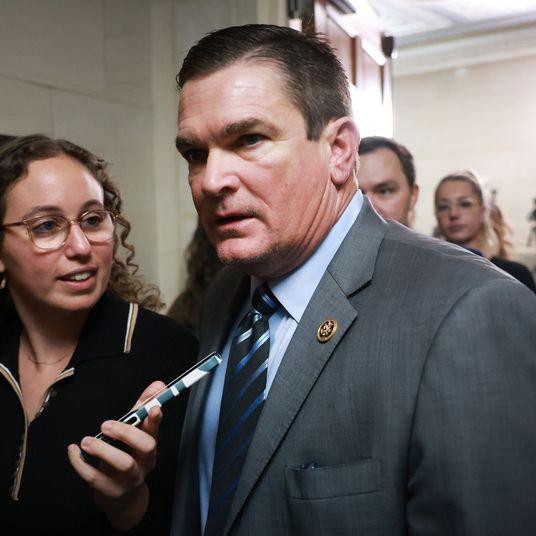
Having grown up in the authoritarian police state of the Jim Crow South, I am acutely aware of the racism that dominated the politics of my home region while white supremacists had the former Confederacy in their grip, and that persisted in various ways even as they lost power. So I am sympathetic to the argument that the roots of today’s twisted Republican Party trace back to the peculiar white southern conservatism that migrated into the GOP during and after the civil-rights movement. New York Times columnist Jamelle Bouie revives this “southern coup” hypothesis in a meditation on the death of Republican prophet (and later anti-Republican writer) Kevin Phillips and the rise of Louisiana’s Steve Scalise. But I think it’s a bit anachronistic. The MAGA movement that has now conquered the GOP is a thoroughly national phenomenon drawing on reactionary and “populist” impulses from every region of the country.
There’s no question that the rapid defection of the South from its ancient Democratic allegiances to the GOP that began with Barry Goldwater’s campaign in 1964 was a major factor in the narrow victory of Richard Nixon in 1968 (for which Phillips was the whiz-kid demographic analyst). But as Phillips pointed out in his seminal 1969 book, The Emerging Republican Majority, southern white conservatives angry about civil rights were just one component of the new coalition that just three years later gave Nixon a vast landslide win that captured nearly every former citadel of Democratic power. There were the Catholic working-class ethnic voters (soon to be known as “Reagan Democrats”) of the urban Northeast and Midwest, who had their own racial and economic grievances with LBJ’s Great Society; rural midwestern and western “populists” bridling against federal regulations; and, throughout the country, white suburbanites defending their quality of life from rising crime and creeping taxes. Yes, racism pervaded much of this newfangled conservatism, but it was native to much of white America, not just imported from the South.
It’s plausible to argue that there was a particular ferocity to southern white conservatism — perhaps based on Evangelical culture and/or a racialized approach to issues like labor relations and public education — that has come to characterize conservatism elsewhere. But just as country music is a national (and even global) cultural force whose southern heritage is increasingly incidental, there’s a point at which white conservative Republican politics became truly national as well, blending southern and non-southern traditions.
When Connecticut Yankee turned Texan George H.W. Bush became president in 1988 by catering to the Christian right in the primaries and running openly racist ads in the general election, was he representing “the South”? How about that much-discussed avatar of harsh partisanship Newt Gingrich, the Pennsylvania-born Army brat from a suburban Georgia district that could have been relocated to just about anywhere in the country without changing its character? Did the South slowly strangle the moderate Republican tradition in its ancestral northeastern stomping grounds, or did the GOP come to represent a coalition of homegrown cultural and economic conservatives in unlikely places such as New York? It’s often been noted that the harsh anti-labor and anti-government themes Scott Walker championed in Wisconsin made the 21st-century politics of that once-progressive state feel like 20th-century “southern” politics. But at a certain point, you have to stop treating a national political movement as some sort of interregional infection as opposed to a genuine pandemic.
That point was surely reached when Donald Trump came along and conquered the Republican Party with a speed that showed how ripe it was for a sharp turn toward authoritarian populism in all its forms, from southern cultural and religious grievances to western anti-government paranoia to the midwestern protectionism and isolationism that gave Trump his “America First” motto.
It’s really no accident that Trump was a quintessential New Yorker who moved to the least “southern” spot south of the Mason-Dixon line, just as it’s no surprise that Ohioan Jim Jordan has outflanked Louisianan Steve Scalise on the right in the House GOP conference. Sure, there remain some distinctively southern MAGA folk such as the Alabaman Tommy Tuberville and arguably even Marjorie Taylor Greene, a wealthy Atlanta suburbanite who basically bought a rural-and-small-town congressional seat. But those battling to restore the “American greatness” of government of, by, and for conservative Christian white people hail from fever swamps located in all 50 states.
More on politics
- Stats Don’t Back Up Republicans’ Crime-Wave Rhetoric
- Jim Jordan Didn’t Just Lose. The Hard Right Did Too.
- DeSantis and Haley See Opening in Trump’s Israel Criticism





























